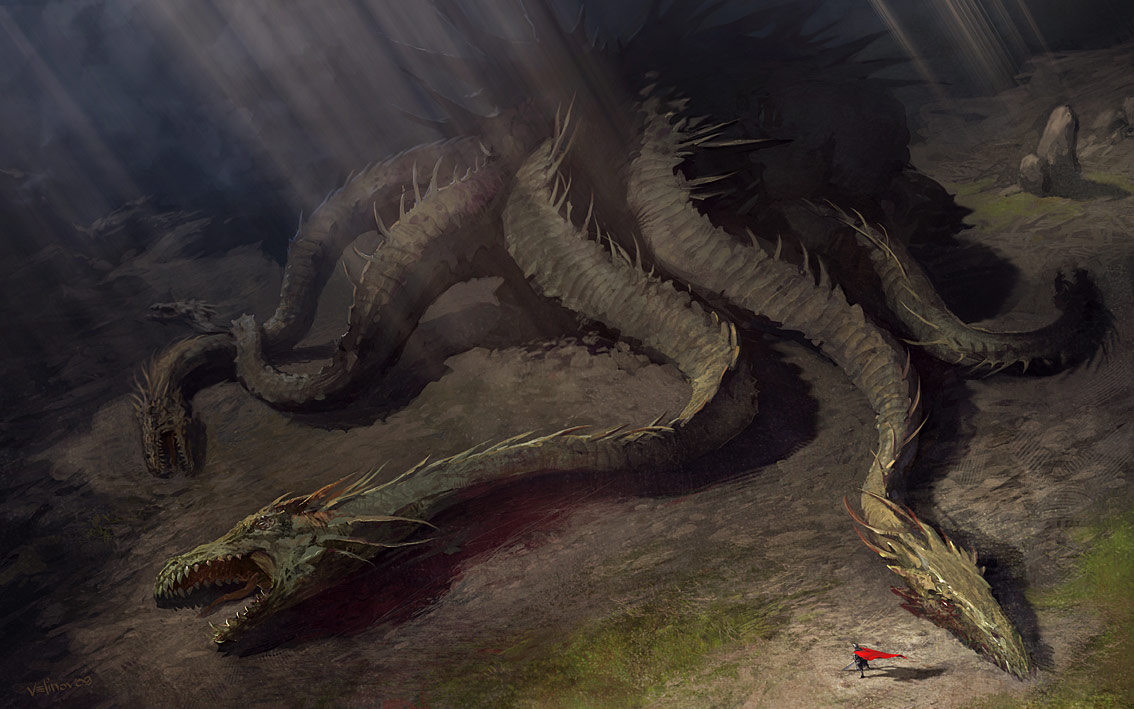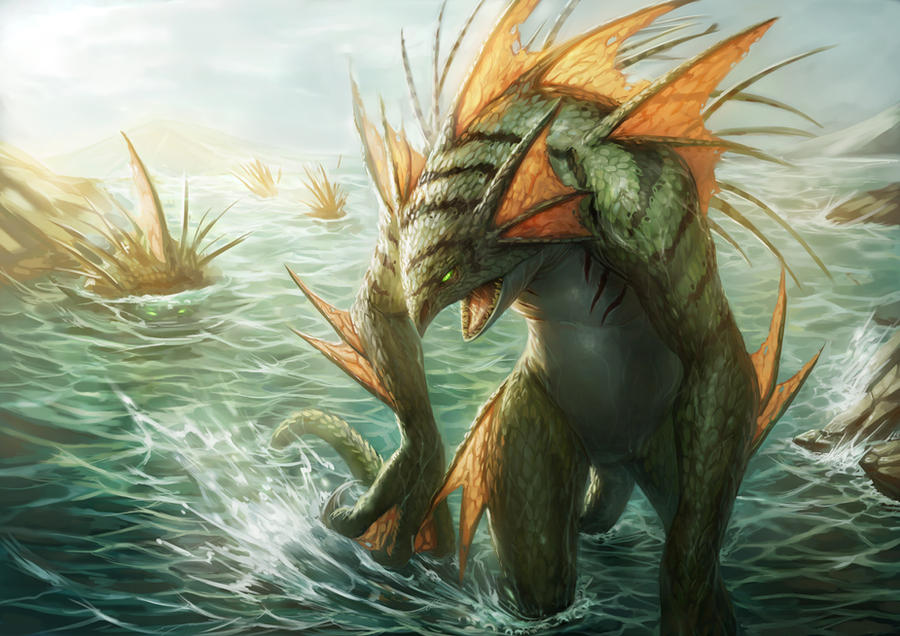Wednesday, May 26, 2010
Monday, May 24, 2010
Sunday, May 23, 2010
STS-5 TRANSORBITAL SHUTTLE
STS-5 “Hopper” Transorbital Shuttle

This little shuttle is ubiquitous throughout Protectorate space and the Free Colonies. It is a simple passenger and light cargo shuttle used for ferrying small amounts of people and goods around in planetary orbit. They are unarmed and short-range, but extremely affordable and utilitarian.
Most Protectorate ships have one or two Hoppers. Space stations, both military and civilian, have whole fleets of them and a good number of upper middle class youth get one for their “coming of age” celebration. They carry everything from diplomatic envoys to laundry.
Model: STS-5 Hopper
Class: Transorbital Shuttle
Crew: One, can carry up to six passengers or one ton of cargo.
M.D.C. by Location
*Engine pods (2) – 80 each
**Main Body – 250
*Destroying an engine pod will reduce speed by half. Destroying both will leave the little vessel adrift.
**Depleting the Main Body will activate the automated distress beacon and leave the vessel a floating wreck. However, the shuttle has redundant life support capable of sustaining life for an additional twenty-four hours. Reducing the Main Body to -75 M.D.C. destroys the vessel. The resulting explosion is too weak to damage most nearby vessels unless they are docked (2D6x10 M.D.).
Speed
 Maximum Sublight Speed: 100,000 miles per hour.
Maximum Sublight Speed: 100,000 miles per hour.
Maximum Rate of Acceleration/Deceleration: 4 Gs.
FTL Speed: Impossible.
Maximum Atmospheric Maneuvering Speed: Mach 2, can achieve escape velocity on a full engine burn, but cannot maneuver.
Statistical Data.
Height: 10 feet
Length: 38 feet
Width: 24 feet
Mass: 4 tons
Cargo: One ton (2,000 lbs.)
Power Plant: Micro-fusion drive.
Range: 600,000 miles (the moon and back)
Market Cost: 100,000 credits, new. Anywhere from 20,000 to 50,000 used.
Weapon Systems: None
Sensors: Very short-range sensors with 5,000 miles range. Long-range mass detectors have 50,000 miles range. These are more or less meant for traffic navigation and landing.
Bonuses: Come in an array of colors and stylish interiors. Extra-powerful internal gravity control allows for a very smooth, comfortable ride. Collision avoidance systems and “assisted piloting” computer gives a +5% to piloting skills.
VENTURE CLASS EXPORATION VESSEL
Venture-Class Exploration Vessel

One of the oldest civilian designs still in service, the Venture exploration vessels were once the cutting edge of human expansion. Even today, dozens ply the space ways as trading ships, pirate vessels, and more than a couple are still pushing the fringes of known space.
The Venture-Class Exploration Vessel is a cruiser-sized ship designed for long-range travel, scientific exploration and cargo. First going into production right before the first war with the Arkhon, many served in that war as heavily armed merchantmen and scout ships. After the war, they returned to their true calling and flew right into history. To this day, no class of human starship has explored more new systems and discovered more new planets than Ventures. Every planet settled as part of the Free Colonies was first scouted out by Ventures. Ventures have made the most extensive explorations of the Expanse, as well as the new frontier, and no ships have traveled deeper into Arkhon space than Ventures that worked as scouts during the war.
Ventures are durable, reliable and easily updated. Since most were refitted to be light combat vessels, they also have reasonable armaments, pushing the edge of what is acceptable for a civilian vessel. Though self-reliant and sturdy, they are not well armored and they are not fast. But a powerful sensor package and modern updates to the Negative Mass Drives means they are often able to identify and flee an enemy before that enemy sees them.
While still doing some exploration, most Ventures are owned by small or large companies who cannot afford a fleet of the much more expensive Pulsar Multipurpose Cruisers. Some are in the hands of private individuals, but most private transport operators prefer light to medium transports over a large, crew-heavy merchantman.
Pirates also enjoy the Venture. Not only is it easy to upgrade, makes it easy to carry large boarding parties, and numerous enough not to stand out, but there’s also a romanticism regarding the Venture that has been held by most of the public for many years. This tends to feed into the romantic, swashbuckling pirate image that people would like to have (even though the truth is pretty far from that at times).
The Venture is also the only human ship design known to have been purchased in significant numbers by alien species. The Xintrin have purchased more than 100 over the decades. Originally, it was to shore up their fleet during the war with the Berylan. However, afterwards, the Xintrin were impressed with the ship, and bought more. At least three dozen are said still to be in service. The Mogg’therin have also purchased over two dozen over the years, mostly used. The Xintrin are eying the Pulsar, the Venture’s philosophical successor, as a potential buy as well, which may lead to humanity earning itself a reputation as a producer of multipurpose cruisers.
Model: E1 Venture Exploration Ship
Class: Merchantman
Crew: Varies, skeleton crew of 60 is required for simple cargo runs. Scientific expeditions and pirate crews tend to be about 120-160.
 Auxiliary Craft:
Auxiliary Craft:
Two small shuttles, OR
Four fighters, OR
One shuttle and two fighters.
M.D.C. by Location
Laser defense turrets (2) – 250 each
External Cargo Frames (2) – 500 each
Forward ion cannons (2) – 800 each
Sensor dish – 300
Module connectors (2) – 2000 each
Primary Drive Engine (1) – 1,500
Secondary Engine Clusters (2) – 2,300 each
Engineering Section/Docking Bay – 6,000
*Bridge – 900
**Main Body (forward 2/3 of the ship) – 12,000
*Destroying the bridge of the ship destroys helm control, and many primary systems. The ship can still be partially controlled from engineering, but at -4 to strike and dodge, and with only the defensive laser as weapons.
**Depleting the M.D.C. of the Main Body will leave the ship a floating wreck with no primary power and multiple hull breaches. This will activate the escape pods in order for surviving crew to escape. Reducing the M.D.C. to -3,000 will cause the vessel to explode, doing 1D4x100 M.D. to everything within a 1,500-foot radius.
Speed
Maximum Sublight Speed: .15 C (15% of the speed of light)
Maximum Acceleration/Deceleration Rate: 5Gs per melee round
FTL Speeds: Varies, most civilian models have Cx183 drives (half a light year per day), but some have newer Cx365 drives designed for the Pulsar cruisers. These drives cover one light year per day.
Top Atmospheric Speed: NA, these ships are not designed for atmospheric insertion and use shuttles to transfer people and goods to and from the surface of a planet)
Statistical Data
Height: 88 feet
Length: 616 feet
Width: 176.5 feet
Cargo: 40,000 tons internally, up to 60,000 additional tons in external pods.
Power Plant: Anti-Matter Reactor
FTL System:
Range: 365 to 730 light years, depending on the NMD drive type. Can carry two years of consumables for a maximum crew of 180.
Cost: Varies, generally about 80 million credits.
Weapon Systems
 1. Ion Cannons (2): Unusually heavy weapons for a civilian ship, these guns were added to all Ventures during the first war. These guns can be fire-linked or fire independently, and the mounts can rotate 90 degrees up or down, or 45 degrees laterally. Even those these guns could be the primary weapons on a frigate, the Venture does not require a special permit. This is due to the fact that the guns are small compared to the size of the Venture, which is comparable to a cruiser. Also, the ships were originally built for expeditions beyond human space, and it was expected that the crews may have to defend themselves against significant threats.
1. Ion Cannons (2): Unusually heavy weapons for a civilian ship, these guns were added to all Ventures during the first war. These guns can be fire-linked or fire independently, and the mounts can rotate 90 degrees up or down, or 45 degrees laterally. Even those these guns could be the primary weapons on a frigate, the Venture does not require a special permit. This is due to the fact that the guns are small compared to the size of the Venture, which is comparable to a cruiser. Also, the ships were originally built for expeditions beyond human space, and it was expected that the crews may have to defend themselves against significant threats.
Primary Purpose: Defense
Mega-Damage: 1D4x100 M.D. for a single blast, 2D4x100 M.D. for a shot from both cannons fired simultaneously.
Rate of Fire: Each cannon can fire twice per melee round.
Payload: Effectively unlimited.
2. Laser Defense Turrets (2): Larger than your standard gun turret, these weapons take a crew of three to operate. They can rotate 360 degrees and can elevate 70 degrees up from the hull. They are used primarily to defend against missiles, fighters, and small rogue asteroids.
Primary Purpose: Defense
Mega-Damage: 4D6x10 M.D.
Rate of Fire: Each turret can fire four times per melee round.
Payload: Effectively unlimited.
Sensors: The Venture has extended range mass sensors of one astronomical unit, and short-range sensors of 400,000 miles.
Note: Pirates will often add two or more additional weapon systems, including missile launchers and sensor jammers.



SIENA RAY ARMORED TRANSPORT

One of the newest ships on the commercial market, the Siena Ray is a fast, well-armed and armored merchantman designed to deliver cargo into potentially hazardous areas. She is sleek, sturdy, and requires a minimal crew, with good cargo capacity. It is one of the most popular ships ever put on the market, and only the price and the weapons permit requirements keep it from dominating the medium transport market.
The Siena Ray was originally designed for military use as a Merchantman that would free up ships that would otherwise be needed as escorts. The Siena Ray would be able to operate reasonably safely free of escort ships, which could be employed elsewhere. However, the Terran Protectorate gave its new transport contract to the Titan Heavy Lift Vehicle, which is not as well armed, but as well armored, with longer range and greater payload capacity. The Titan could move multiple combat vehicles and had temporary barracks and large numbers of sleeper pods for the moving of ground troops. The Siena Ray's cargo hold was very basic in comparison.
Undeterred, Kugler-Vaughn Industries powered down the weapon systems and downgraded the sensor package and repackaged the design as a commercial high-speed armored transport, for use in areas of high piracy and perilous environmental hazards. Generally too pricey for the average independent spacer, the Siena Ray was aimed at the small company, private contractor sector. She quickly became a favorite for small, well-paid shipping companies that just couldn't justify buying a bulk cargo ship, and whose cargo was too valuable to risk placing on a cargo carrier or container ship.
But, above all, the Siena Ray has become a favorite of mercenaries. Mercs have bought more of these ships than any other sector. They are perfect for moving small military units quickly into dangerous places, are easily upgradable, and make fantastic picket ships, light patrol vessels and blockade runners. This has also made them a favorite target for pirates and raiders as well. Not only is it likely that a Siena Ray has cargo worth stealing, but if a pirate can capture the ship intact, they've got a fine new vessel ideal for piracy. Of course, actually taking a Siena Ray from a trained crew is not easy, and most pirates look for prey that puts up less of a fight.
Model: SR-81 High Speed Armored Transport
 Class: Merchantman
Class: Merchantman
Crew: Standard crew of 12. Maximum crew space for 20. With the installation of an A.I., the ship can be run by a minimum of three people.
Auxiliary Vehicles: Docking bay can house one fighter, a small shuttle or a couple land vehicles.
M.D.C. by Location
Wings (4) – 600 each
Ion turrets (2) – 200 each
Laser cannons (2) – 350 each
Secondary thrusters (8) – 450 each
Primary thruster – 1,000
Thruster pods (2) – 3,000 each
Command module (front 1/3) – 2,500
Short-range sensors and forward spotlights (2) – 200 each
Personnel airlocks (2) – 120 each
Dorsal sensor fin – 250
Long-range communications antenna – 50
Bridge – 600
Cargo bay door – 900
*Main body – 6,500
*Depleting the M.D.C. of the main body will disable the vessel, leaving it a floating wreck and activating the life pods. There are enough for a crew of 20. Reducing the M.D.C. to -1,000 will cause the vessel to explode, doing 1D6x100 M.D. damage to everything within a 500-foot radius.
Speed
Maximum Sublight Speed: .22 C, or 22% of the speed of light.
Maximum Acceleration/Deceleration Rate: 8 Gs.
Maximum FTL Speed: One light-year per day.
Top Atmospheric Speed: Mach 6+, capable of achieving escape velocity with minimal loss of maneuverability (remember, these were originally designed to perform combat drops).
Statistical Data
Height: 130 feet (39.6 m)
Length: 400 feet (122 m)
Width: 343 feet (104.5 m)
Cargo: 1,500 tons
Power Plant: Helium-3 Fusion Reactor
Range: 120 light years, with six months of consumables for a standard crew. Range could be tripled by using most of the cargo bay (80%) for food, water, spare oxygen scrubbers and Helium-3.
Market Cost: 10 million credits new, 6.5 million used.
Weapon Systems
 1. Laser Cannons (2): A pair of medium-range laser cannons are mounted on either side of the command module, and are commonly referred to as the cheek guns. These have moderate stopping power and medium range. They are good weapons for a civilian vessel, but do not rival anything on a military vessel of comparable size. Each pair of cannons can rotate up or down 90 degrees. They are controlled from the bridge’s weapon station. These are often upgraded illegally by mercs, doubling their power, or rate of fire.
1. Laser Cannons (2): A pair of medium-range laser cannons are mounted on either side of the command module, and are commonly referred to as the cheek guns. These have moderate stopping power and medium range. They are good weapons for a civilian vessel, but do not rival anything on a military vessel of comparable size. Each pair of cannons can rotate up or down 90 degrees. They are controlled from the bridge’s weapon station. These are often upgraded illegally by mercs, doubling their power, or rate of fire.
Primary Purpose: Defense
Mega-Damage: 6D6x10 M.D. for a blast from each cannon. Twin blasts from both cannons do 1D6x100 M.D., and only use up one attack per melee.
Rate of Fire: Each cannon can fire three times per melee round.
Payload: Effectively unlimited.
2. Ion turrets (2): The Siena Ray has a pair of manned ion turrets on the dorsal and ventral main hull for point defense. These turrets are used to engage enemy fighters and missiles. They are operated by a single gunner from inside the turret. They have a 360-degree rotation, autoguard features that prevent the gunner from shooting the wings, and 45 degrees of elevation.
Primary Purpose: Anti-starfighter and anti-missile.
Mega-Damage: 3D6x10 M.D. per dual blast.
Rate of Fire: Equal to hand-to-hand attacks of the gunner.
Bonus: +2 to strike due to advanced targeting computer.
Payload: Effectively unlimited.
Sensors: Long-range mass detection and electromagnetic sensors have 1.25 million mile range. Short-range sensors have a range of 100,000 miles.
Bonuses: The Siena Ray was designed so that, in case of a combat emergency, trained infantry techs could perform at least basic repairs. This gives techs a +10% chance to repair the vessel, but this bonus does not apply to upgrades.



G-9 ATLAS CONTAINER SHIP
G-9 Atlas Container Ship

The Atlas is a modular container ship common along the commercial shipping lanes. Essentially interstellar tugs, these powerful ships haul a number of individual cargo pods. This allows for easy delivery and pick-up, multiple stops that do not require landing, and the ability to swap cargo in deep space with other ships.
They are often used to haul bulk materials like water, ore and raw metals. Each cargo pod has its own separate environmental control system, meaning a container ship can haul items with radically different storage requirements. The cargo pods are attached to a modular frame. Container ships carrier one frame in normal operations, but two additional frames can be added behind the first, tripling the ship’s cargo capacity. The drawbacks are that the Atlas cannot transport passengers in the cargo pods, and the cargo within the pods are not accessible during flight operations.
These ships, frequently used in colonizing worlds and delivering military supplies, come equipped with one ion cannon turret for point defense.
Model: G-9 Atlas
Class: Container Freighter
Crew: Four, capable of carrying up to four more passengers.
M.D.C. by Location
Cargo Pods (varies) – 400 each
Frame – 800
Ion turret – 200
Engine pods (4) – 300 each
*Main body/crew compartment – 800
*Depleting the M.D.C. of the Main Body leaves the vessel a floating wreck. Reducing the main body to -200 M.D.C. causes the vessel to explode, doing 4D6x10 M.D. to everything within a 200-foot radius. There is one escape pod capable of sustaining four for 48 hours.
 Speed
Speed
Maximum Sublight Speed: .2 C., or 20% of the speed of light
Maximum Acceleration\Deceleration Rate: 4 Gs per melee round
Maximum FTL: C-x183 (1/2 light year per day).
Maximum Atmospheric Maneuvering Speed: Mach 3. Can attain escape velocity on a full engine burn, but cannot maneuver.
Statistical Data
Height: 41 feet
Length: 212 feet
Width: 78 feet
Cargo: 400 tons (50 tons per cargo pod; a standard frame carries eight pods.)
Power Plant:
Range: 100 light years, or 200 days.
Market Cost: 700,000 credits new, 300,000 credits used.
Weapons
1. Ion Turret: This is a standard ion turret used against star fighters and missiles. It is remotely controlled by the co-pilot, has a 360-degree rotation and 45 degrees of elevation. While low on power, they have good range for a defense turret.
Primary Purpose: Defense
Mega-Damage: 2D6x10 M.D.
Rate of Fire: Four times per melee round.
Payload: Effectively unlimited.
Sensors: The Atlas has short-range sensors only, with a range of 100,000 miles. Long-range sensors are limited to passive optical (computer-controlled digital telescope) and are used primarily for navigation.

ZAANUSSII

RIGELAN DEFENCE FORCE

THE TWINS

AZRIL

KELEV

STEINMAN CLASS B HEAVY HAULER
Steinman Class B Heavy Hauler

While it will never get the glory of a Crossbow, or even the quiet respect of a Starmaster, the Steinman is, arguably, the most important starship in human space. The vessel, over 70 years old, is quite simply the lynchpin in all interstellar human commerce, without which there could be no Protectorate.
Little more than a command module, a pair of engines and a cargo hold, the Steinman is a simple, but effective design that has kept colonies, core worlds, and the military supplied through peace, war, and across a hundred varying climates.
Not at all fast, and usually completely unarmed, the ship’s only defense is a powerful passive sensor system, and a negative mass drive with the shortest warm-up time of any non-military human ship in operation. Often traveling in convoys with a few escort vessels, a pack of Steinman under attack will quickly go to FTL using preset coordinates, so that there is a much shorter navigational computation time. An average ship takes 1D4 minutes to perform a jump, but a Steinman can usually do it in half that (most military ships have the same jump time).
With a crew of six, a modular cargo hold that can haul up to 500 tons, and a very reasonable price tag, it is the ship of choice for most large corporations, and is the transport of choice for the military as well. But even the military versions rarely have armaments. To keep space consumption to a minimum, the Steinman has a very small power plant. At most, it might be able to be fitted with a turret, but not a very powerful one. A much more reasonable option for arming the Steinman is to put missiles on it, which need no large power source.
Steinman haulers are most often encountered hauling food, raw materials, dry goods, water, large groups of people and military supplies. Pirates tend to avoid them because highly valuable cargo is much more likely to be on a smaller, better armed, light or medium transport. Some budget colony operations also use them to transport colonization supplies and colonists. By dividing the massive cargo bay into two decks filled with bunk beds, the Steinman can carry up to 600 passengers.
Model: C-98 Class B Heavy Hauler
Class: Freighter
Crew: 6, capable of carrying up to 600 passengers
M.D.C. by location
Sensor array – 150
Engine pods (2) – 400 each
*Main body – 2,000
Command module – 800
*Depleting the M.D.C. of the main body would disable the vessel, causing the command module to detach as a life pod. Steinmans rarely explode; usually only when they are carrying highly flammable or volatile cargo.
 Speed
Speed
Maximum Sublight Speed: .2 C, or 20% of the speed of light
Maximum Acceleration/Deceleration Rate: 4 Gs per melee round
Maximum FTL: 365 x C, or one light year per day, half that speed for civilian models.
Top Atmospheric Manuevering Speed: Mach 1.5, but can attain escape velocity on a full engine burn (cannot maneuver)
Statistical Data
Height: 44 ft
Length: 210 ft
Width: 115 ft
Cargo: 500 tons
Power Plant: Fusion Reactor
Range: varies with supplies carried. Estimated it could travel 400 light years, but none has ever tried.
Market Cost: 2 million credits new, 1 million credits used.
Weapon Systems: None
Sensors: The Steinman has a powerful early-warning system that gives it mass and electromagnetic field sensors with a range of 1 million miles, and powerful short-range sensors with a 300,000-mile range.



Followers
Blog Archive
-
▼
2010
(229)
-
▼
May
(37)
- AFTER THE RIOTS
- RIGELAN REBELLION
- ORBITAL - NEW VOLTA
- RAMPAGE
- CYBORG 44-GGN
- IMPLOSION
- STARBIRTH
- SOLAR DYNAMICS
- ZANDAARA
- URMM-OSRI
- VELECS
- ZAGUL
- NOJAAL
- FERRANEC
- PAVAAL
- UMBARR HIVE MASTER
- UMBARR
- HAMMA WARRIOR
- MUUH
- KRAAL
- MAGNITUDE 3.256
- STS-5 TRANSORBITAL SHUTTLE
- VENTURE CLASS EXPORATION VESSEL
- SIENA RAY ARMORED TRANSPORT
- G-9 ATLAS CONTAINER SHIP
- PULSAR COMMERCIAL CRUISER
- XINTRIN FREE TRADER
- STARMASTER LIGHT TRANSPORT
- BOONE CLASS SCOUT CRUISER
- RIFT SECTOR
- PLANET DAARG-ASIDRA
- REQUIEM
- DENEB IV FF7 CLASS CRUISER
- VULGARE
- NEO ORINOCO
- UNIVERS
- ORION'S ARM
-
▼
May
(37)



































